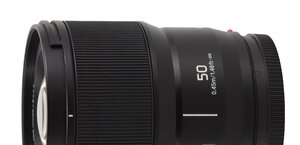Nikon Nikkor AF-S 28-300 mm f/3.5-5.6G ED VR
4. Image resolution
The situation changed drastically with the introduction of the digital reflex cameras with APS-C/DX sensors. New 18-200 mm lenses (the equivalents of full frame 28-300 mm devices), which were launched at the same time as cameras, could provide a better quality of images because of smaller detector. Indeed they performed very well, especially in the frame centre, where they could surprise with the image quality, taking into account their zoom multiple of course.
Changing the set of a 18-200 mm lens plus an APS-C/DX sensor into a 28-300 mm device on full frame can prove to be difficult, though. The second lens, although bigger, can have problems with performing well on full frame. The standards are set very high and we were very curious how the Nikkor managed to perform there.
Please Support UsIf you enjoy our reviews and articles, and you want us to continue our work please, support our website by donating through PayPal. The funds are going to be used for paying our editorial team, renting servers, and equipping our testing studio; only that way we will be able to continue providing you interesting content for free. |
- - - - - - - - - - - - - - - - - - - - - - - - - - - - - - - - - - - - - - - - - - - - - - - -
We decided to check the results by attaching the Nikkor 28-300 mm VR to a full frame Nikon D3x. As always our test was conducted using RAW files developed without any sharpening by the dcraw program. The results of the tested lens in the frame centre you can see on the graph below.

If you remind yourself that the decency level in tests conducted on the D3x is positioned near 30 lpmm and the best fixed-focal lenses reach as high as 46-47 lpmm you shouldn’t have any reasons to complain here. The lens doesn’t break any resolution records but nobody expected it to do so after all. The fastness of the lens is directly responsible of the lack of records. We get record results when we limit optical aberration by stopping down the lens by 2-3 EV. When the lens is slow, that stopping down makes us descend to an aperture range where the diffraction becomes a serious limitation on the device, preventing any record-breaking results.
If we take this into account and we won’t expect the Nikkor 28-300 mm to give us such good quality photos as the best „primes”, we can be pleased with the performance in the frame centre. We enjoy especially the fact that the decency level can be reached at the maximum relative aperture in the whole focal range and on stopping down slightly we get really sharp photos.
Let’s check how the lens fares on the edge of the APS-C/DX sensor. The graph below will allow us to do so.

You would be more hard-pressed here to find reasons to enjoy the performance. In fact only in the 50-100 mm range we can use all apertures without any problems and be pleased with acceptable images even at the maximum aperture. When we pass to the ends of the focal range we meet difficulties. At 28 mm sharp photos can be obtained only on stopping down the lens to f/8.0. In the 200-300 mm range even applying f/8.0 doesn’t guarantee fully satisfying effects and only near f/11 we can speak about a decent quality of image, providing that we turn a blind eye to minor flaws.
On the edge of full frame the situation becomes even worse as it is illustrated on the graph below.

Here the decency level is reached only at focal lengths ranging from 50-100 mm and by f/11 aperture. It is clear that the combination of a zoom lens with such a wide range and the corners of a relatively densely pixel-packed full frame is really a difficult challenge.
It is already our tradition that at the end of this chapter we present our test chart crops taken in the frame centre of JPEG files, saved along RAW files.
 |






